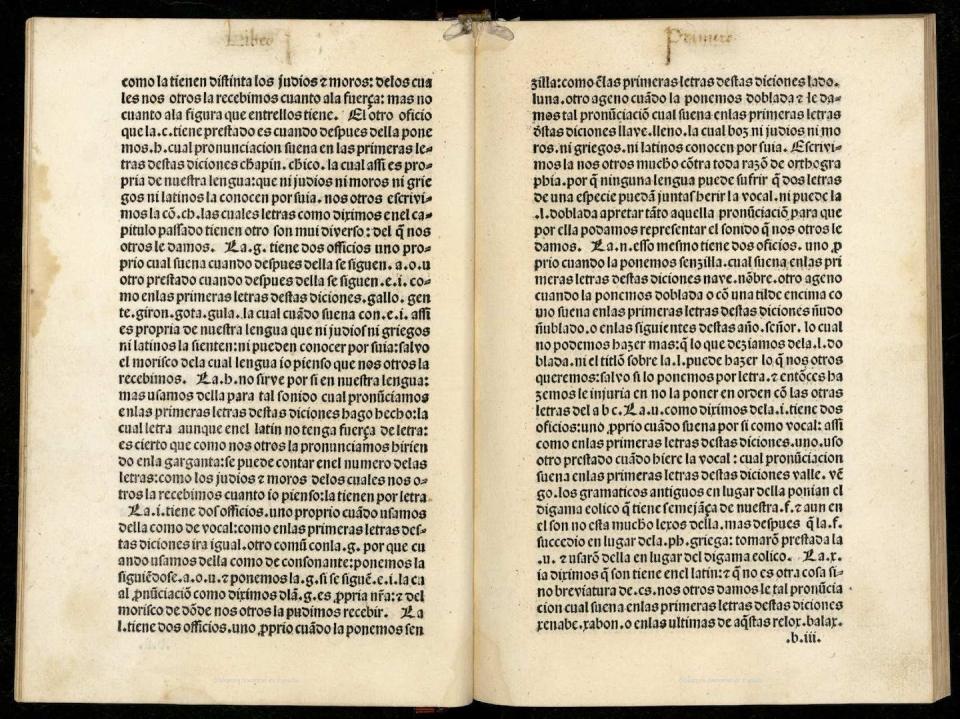Where does the 'ñ' come from? The history of a very special Spanish letter

The letter ñ is the emblem of Spanish, the mother tongue of almost 500 million people worldwide.
But what is the origin of the sound and of this curious letter? Why don’t we find the letter ñ in other languages in which the sound does appear? Is the ñ the exclusive heritage of Spanish?
The origin of the sound
The letter ñ represents a sound that did not exist in Latin, but is found in most Romance languages (including Italian, Portuguese, French and Spanish). This sound is defined as nasal (with air coming out of the nose), palatal (the tongue rests against the hard palate) and sonorous (the vocal cords vibrate).
To understand the origin of this sound, it must be borne in mind that, in addition to the cultured Latin, the people of the empire spoke what is known as “vulgar Latin”. So it was common throughout the empire to use peculiarities in pronunciation and morphological and syntactic simplifications.
One of these phenomena was the tendency to palatalise the “n”, which will give rise to the ñ sound, in three main contexts:
NI/NE + vowel: When in Latin the group ni or ne appears followed by another vowel, the n catches the sound of the palatal vowels and ends up adopting the ñ sound. Such is the case of Latin vinea, which gives rise to viña (Spanish), vigne (French), vigna (Italian), vinha (Portuguese) and vinya (Catalan).
GN: The sound also appears by evolution of gn, as in agnellus or agnuculus (little lamb), from which derives the French agneau, the Italian agnello, the Spanish añojo or the Catalan anyell.
NN/MN: the articulatory effort used to pronounce the groups nnn and mn also led over time to the ñ sound. This is the case in año (Spanish), which comes from the Latin annus, or sueño (Spanish), sogno (Italian) or sohno (Portuguese), which come from the Latin somnu.

The origin of the spelling ñ
In the Middle Ages, copyists and scribes came across a new sound for which there was no letter, so they transcribed it according to its Latin etymology as ni + vocal, gn or nn.
In order to save time and, above all, paper and ink, the use of abbreviations was very common. The nn was abbreviated with an n with a small virgulilla above it, and this is how, for reasons of economy, the letter ñ was born.
The work of Alfonso X the Wise in the 13th century was fundamental in selecting and fixing the ñ as the only spelling to represent the palatal nasal sound. Later, the first Spanish Grammar published by Antonio de Nebrija in 1492, recognises the status of the ñ and its differentiated sound with respect to the letter n.

In the first general monolingual dictionary of Castilian, the Tesoro de la lengua castellana o española by Sebastián de Covarrubias (1611), the spelling ñ appears inside words. However, despite its full implementation, it was not until the publication of the Royal Spanish Academy dictionary of 1803 that it appeared as a differentiated initial letter.
The adoption of ñ as an abbreviation of nn is the solution adopted in Spanish and Galician. In Italian and French, the nasal palatalisation was represented by the digraph gn, another of the Latin groups that gave rise to the sound. In Catalan, it is represented by the group ny, and in Portuguese, as in Occitan, as nh.
The ñ around the world
As we have seen, the sound appears in most of the languages that derive from Latin, but not only in them. It is also found in a variety of languages, from Slavic languages such as Czech (with its ň) or Polish (with its ń), to Amerindian and Senegalese languages.
Influenced by Spanish, the spelling ñ is also present in the Philippine languages, as well as in Guarani, Quechua, Mapuche and Aymara, among others. In the United States, the ñ is found in terms of Spanish origin such as piña colada and El Niño. The Latin community demands respect for this spelling, which is present in surnames such as Peña or Núñez.
Although Spain do not have the exclusivity of the ñ, it is undoubtedly an icon of Spanish in the world. Moreover, it represents the struggle for cultural identity, and even resisted the attempt to standardise keyboards without the letter ñ in 1991, finding distinguished defenders such as Gabriel García Márquez and Mario Vargas Llosa, among others.

 Yahoo Noticias
Yahoo Noticias 
